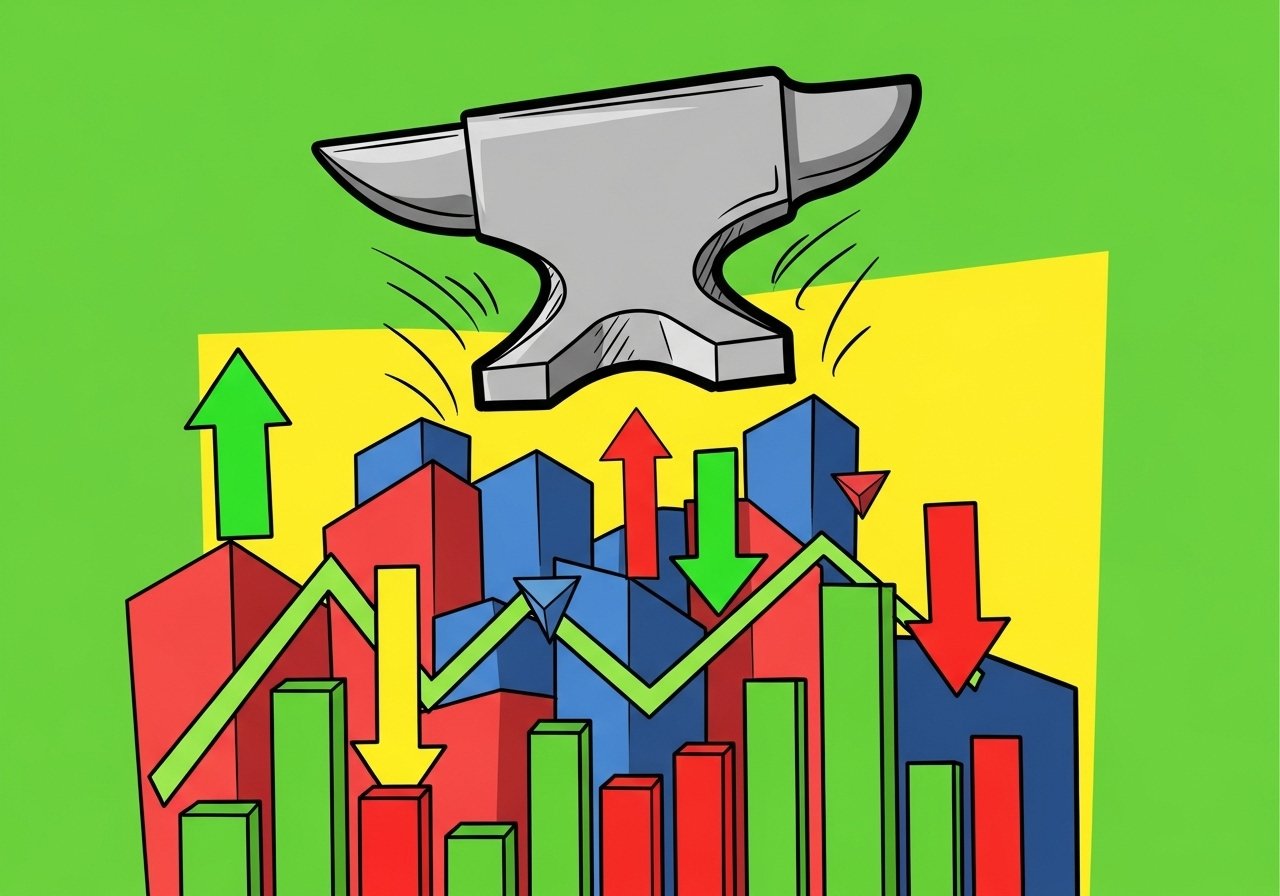Your Investing Strategy Should Start Here
Disclaimer: This page contains some affiliate links that might just lead you to the promised land of awesomeness (or at least some cool products). I personally use all of the products promoted, and recommend them because they are companies I have found to be helpful and trustworthy. I may receive commissions for purchases made through links in this post.
One undeniable truth about investing is that no matter what kind of investor you are, your strategy—or the stocks you own—won’t always be in favor.
Across a long investing career spanning multiple decades, there are bound to be years of underperformance. Momentum investors, value investors, dividend investors, day traders—they all have their moments in the sun, and they all go through cold spells as well.
But investing isn’t about constantly switching strategies or chasing whatever’s working right now. It’s about finding an approach that aligns with your goals—one you can stick with through both the highs and the lows.
For me, that’s investing in dividend-paying companies that are consistently growing their sales, earnings, and free cash flow. For better or worse, if a company doesn’t pay a dividend, it’s not for me.
I know there will be times when my portfolio underperforms in the short term, and other times when it does really well. But I think investing is about more than just how my stocks move up and down at any given moment.
Because I only invest in dividend-paying stocks, a big part of how I measure progress is by the amount of passive income my portfolio generates. And for the most part, that has nothing to do with what the share price is doing.
My ultimate goal is to build a portfolio that delivers respectable returns and a reliable, growing stream of passive income because, one day, that income will help pay my bills.
And that income component (measured against my own personal needs) is exactly why I’ve always questioned the idea that total return (measured against the rest of the market) is the only thing that matters. I’m not saying it doesn’t matter, but it isn’t everything.
My thought is that if your strategy is built around generating sustainable, growing income (with huge emphasis on both sustainable and growing), then short-term price movements or underperformance don’t necessarily mean you’re on the wrong track.
At the end of the day, your investing strategy should align with your goals. And, as soon as possible, you should define what your goals actually are.
I would encourage you not to worry about what other people say you should shoot for—whether it’s total returns, dividend income, or anything else. What do you actually want from your portfolio? Why are you investing in the first place?
As long as wealth is being built, my income is growing, I’m learning along the way, and I’m making progress toward the goals I’ve set, then we’re headed in the right direction. What more could you ask for?
Having said that, I want to hear from you: What are your investing goals, and what do you want out of your portfolio? Write to me here and let me know.
And if you want to find out what’s been going on in my portfolio lately, check out this video here.
Dividend Investing Democratized
Join thousands of savvy investors in the pursuit of early retirement. Get Retire With Ryne delivered straight to your inbox every week as you build your perpetually growing, cash-flowing dividend stock portfolio.
Blossom is a unique social platform created by investors, for investors. Unlike the usual social media platforms, Blossom is dedicated exclusively to discussions on finance and investing.
I've been actively posting on Blossom since November, and I absolutely love the community over there. With over 200,000 DIY investors, Blossom is buzzing with all sorts of different investment ideas. The coolest part is that you can see everyone's portfolios, which you can automatically link within the app!
Picture Twitter/X, but with an added portfolio tracking feature and less trolling – that's Blossom for you. Personally, I find it much more enjoyable than my experience on Twitter/X, and I think you will too.
Download Blossom today, and follow me (@ryne) to see my complete portfolio and stay updated on all my real-time investment moves.
IN MY PORTFOLIO 📈
Start tracking your portfolio with Snowball Analytics today—free for 14 days! Plus, use code "rynewilliams" at checkout to get 10% off your subscription.
ICYMI 🎥
Should Investors Only Care About Total Return? | Ep. 22
In this episode of The Deep End, we dive into a timeless question at the heart of every investing strategy: Should investors only care about total return?
CAREFULLY CURATED 🔍
📺 The In-N-Out Empire - If you know me, you know I’m a huge fan of In-N-Out. This video does a great job showing how the company breaks all the typical fast-food rules, and how its commitment to simplicity and consistency has become the secret sauce behind its success.
🎧 How Dividend Investing Changed My Life - I recently had the honor of joining The Dividend Guy Blog podcast for a wide-ranging conversation about everything from my dividend investing strategy to my investing origin story.
📚 Complexity Investing - Long? Definitely. But if you're serious about finding high-quality investments, this 46-page report definitely delivers.
SINCE YOU ASKED 💬
"I look at buybacks and see them as a way a company can use the process to manipulate earnings—to make them look better than they really are. Do you have an opinion on this? Am I wrong in my assumptions?"
- @sharesuccess7849 | YouTube
This is a fantastic question! You’re not wrong to be skeptical—buybacks can be used in a manipulative way, especially when companies heavily rely on them to boost earnings-per-share every quarter.
But buybacks aren't inherently bad. They're a tool, and like anything in finance, it all comes down to context and execution.
Unsurprisingly, Warren Buffett actually laid out a great framework for thinking about buybacks. In his 1999 shareholder letter, he said there’s only one situation where they make sense:
“First, the company has available funds—cash plus sensible borrowing capacity—beyond the near-term needs of the business and, second, finds its stock selling in the market below its intrinsic value, conservatively-calculated.”
So really, there are just two boxes a company needs to check before buying back shares:
It has excess capital that isn’t already earmarked for more pressing priorities.
The stock is trading for less than what the business is really worth.
According to Buffett, buybacks are a great thing to do when those conditions are met. They’re a smart use of capital because they increase your ownership in the business without you having to buy more shares, and that increase in ownership can benefit you in a couple of ways.
First, it reduces the number of shares outstanding, which can boost the share price over time due to simple supply and demand. Fewer shares mean each remaining share represents a bigger slice of the company.
Second, it increases your share of the company’s dividends. With fewer shares to pay out to, a company can either reduce its total dividend payments while maintaining the dividend per share, or keep the total payout the same and raise the per-share amount. Either way, it makes the dividend easier to sustain and grow.
So overall, buybacks can be abused, especially when done at improper prices. But when done the right way, they can be a great way for a company to create value for shareholders.
Have a question? Ask me here to see it featured in an upcoming newsletter.
LAST WORD 👋
I love hearing from you all, and I'm always looking for feedback. How am I doing with the newsletter? Is there anything you'd like to see more or less of? Which aspects of the newsletter do you enjoy the most?
Your insights on these matters are essential in making this newsletter the best it can be. If you want to help, take a moment to share your thoughts by completing this quick form. It'll take you less than 60 seconds - guaranteed.
Thanks in advance!






